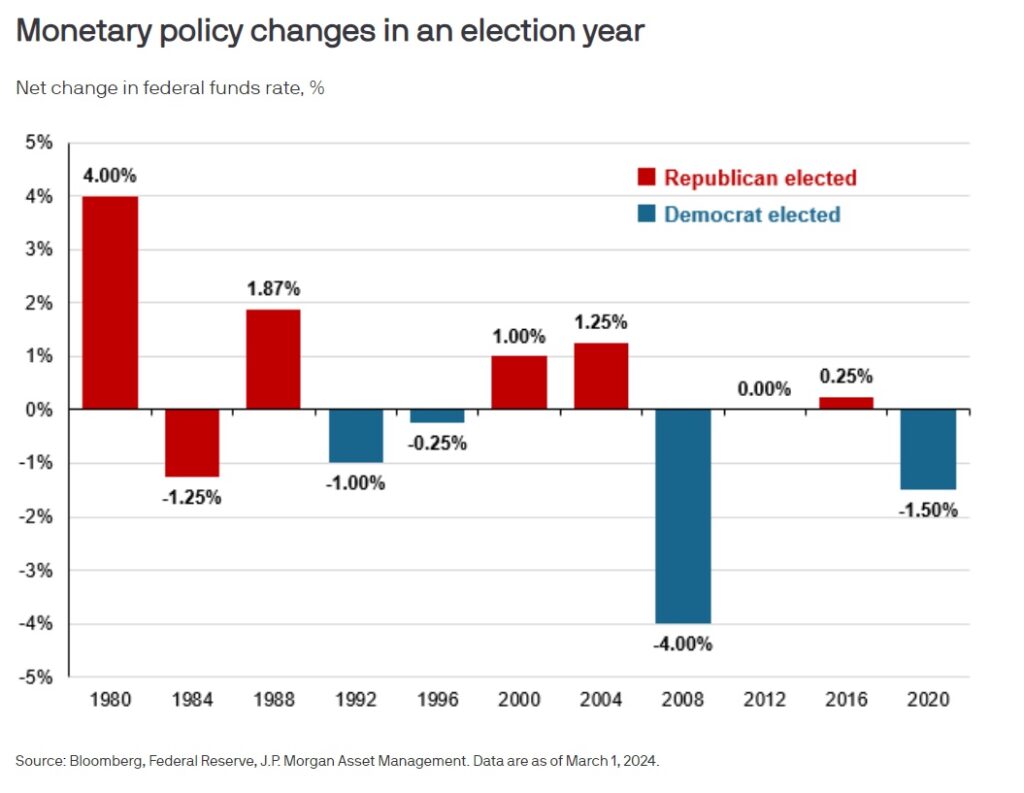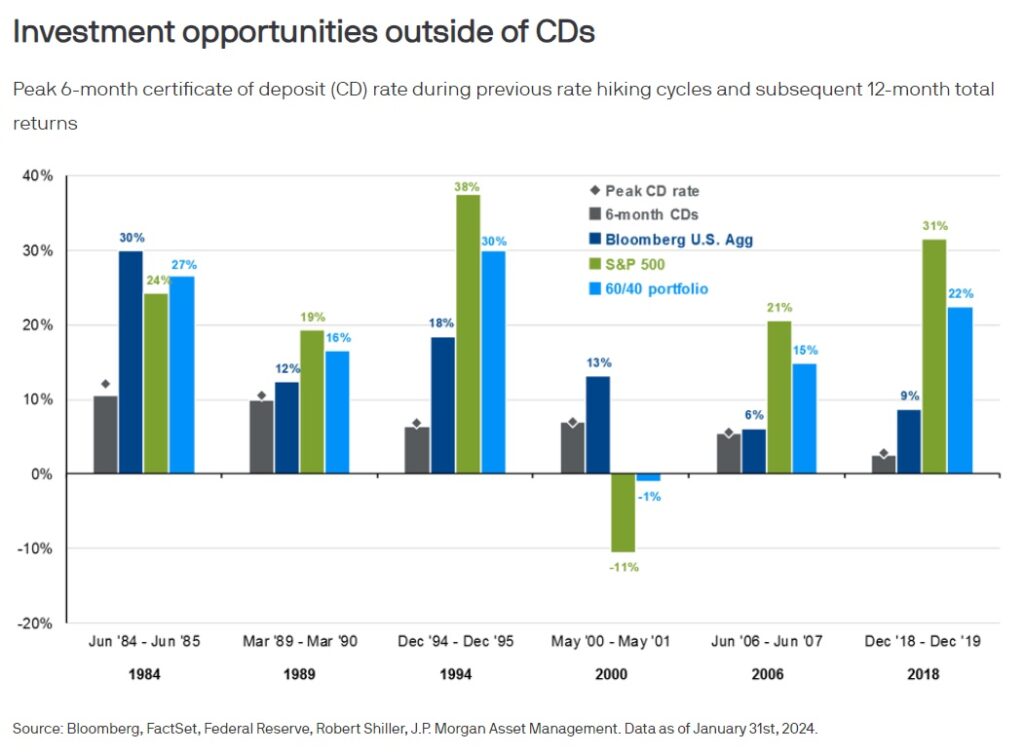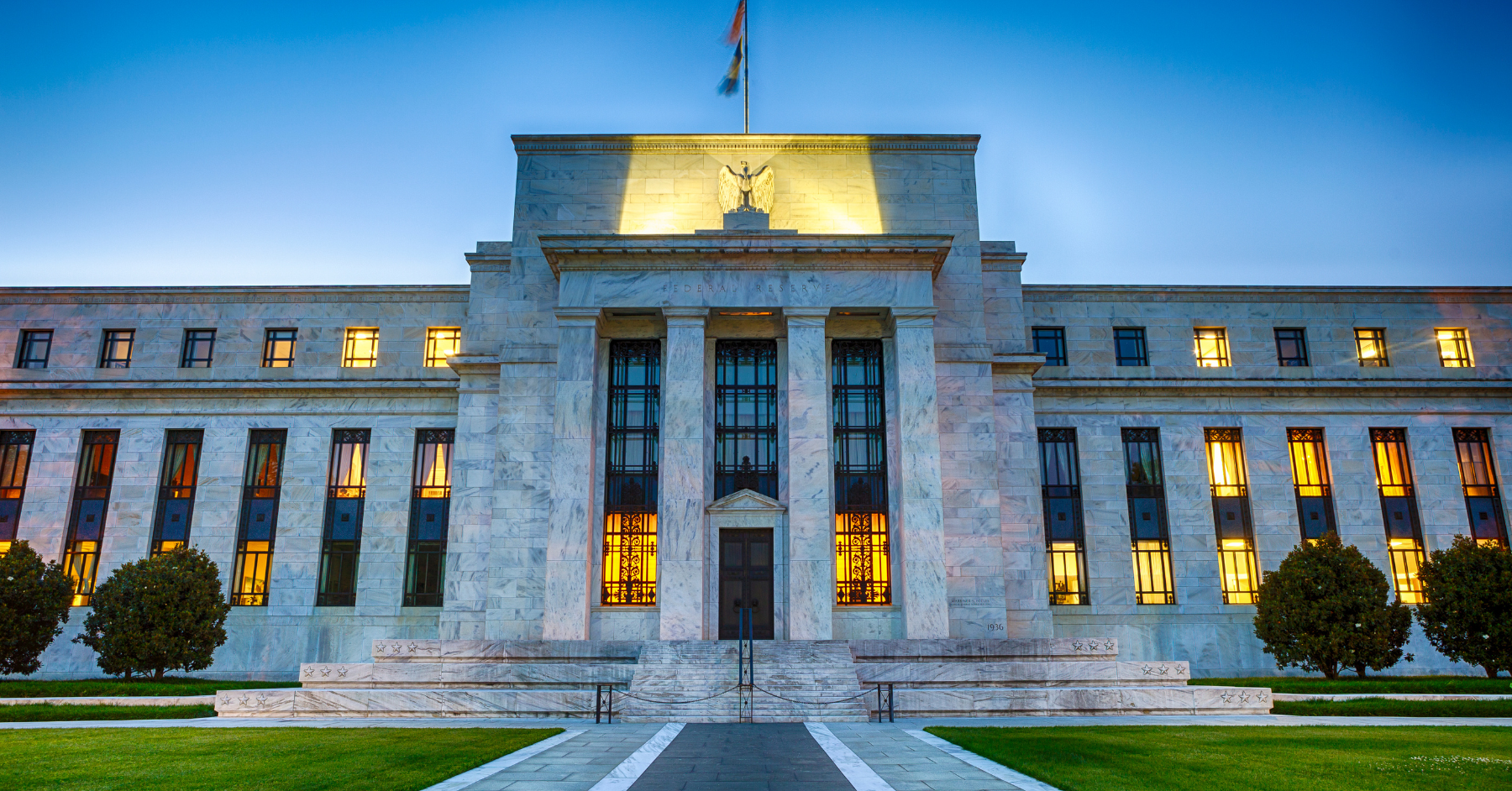Key Takeaways
- Since 1980, the Fed has either hiked or cut rates in every election year except 2012: The Fed has continued to implement policies supporting its mandate while maintaining its independence from politics
- Investors should be wary about falling into the “cash trap”, as history has shown that one leaves money on the table by not taking some risk in investing
- We highlight crucial tax return deadlines for individual and business tax returns
What Has the Fed Done in Election Years?
As monetary policy remains a significant focus in the macro landscape of 2024, investors are curious about the potential impact of the election on Federal Reserve (Fed) policymakers. Despite the election year, the Fed has historically remained committed to its dual mandate of price stability and maximum employment, without being swayed by political pressures. Instead of sitting on the sidelines, the Fed has continued to implement policies that support its mandate while maintaining its independent from politics.
Throughout the years since 1980, the Fed has adjusted interest rates in every election year, with one exception being 2012. During this year, rates remained at zero due to the ongoing recovery from the financial crisis. Other than this, the Fed lowered interest rates in five election cycles, and raised rates in five election cycles.
The level of activity varied across different election years. For example, in 1980, the Fed raised interest rates by 1%, then lowered them by 5.5% between February and July when the economy entered a recession. However, the Fed resumed rate hikes from August to November to combat double-digit inflation. In other years, the Fed continued the cutting or hiking cycles that were already in progress. In 1992, the Fed concluded the steady cuts that had started during the 1990-1991 recession. Although there were instances where the Fed initiated new monetary policy cycles, such as the two-year rate hiking cycle that began in June 2004, rates were at a low base of 1% at the time. The Fed responded quickly to severe recessions in 2008 and 2020 by implementing significant rate cuts.
Whether the Fed was responding to dynamic economic conditions, severe recessions, or following an established path, one clear theme emerged – the Fed remained committed to its dual mandate, regardless of election years.

Avoid Falling Into the “Cash Trap” – by JPMorgan Market Strategists
Thanks to the Federal Reserve’s (Fed) rate hiking campaign, cash looks more attractive today than in the last two decades. As a result, investors have flocked to cash products, like Certificates of Deposit (CDs), for both safety and income. This has pushed money market fund assets to a record $6 trillion.
However, investors should be wary of falling into the “cash trap”. After all, history has clearly shown that one leaves money on the table by not taking some risk in investing. Against this backdrop, how can investors gain the confidence to step out of cash and build long-term, diversified portfolios? Below are seven principles that help with that:
- Too much cash has significant opportunity cost
History has shown that when interest rates peak, stocks and bonds typically outperform cash over the subsequent 12 month. In fact, in the last six instances of peak rates, a 60/40 portfolio has outperformed cash 83% of the time by an average of 15%. - Even when cash performs well, other assets perform better
2023 cash returns were the best seen since 2001. However, with the exception of commodities, investments across asset classes, geographies, styles, and sizes all outperformed cash, in some cases by a significant margin. - In the face of inflation, investors need more from their portfolios
Over the last 30 years, cash has been unable to keep up with the creep of inflation. By contrast, other investments have been much better places to park capital. Moreover, for investors willing to take more risk, the reward has generally been worth it. - Bonds provide income and portfolio protection
Coupons across the fixed income market have risen alongside cash. This allows investors to weather short-term rate volatility. In other words, there is more upside potential than downside risk in today’s bond market. - Earnings drive equity markets and profits look robust
Strong recent equity market performance was due largely to multiple expansion from a small handful of growth names. In 2024, earnings growth should do most of the heavy lifting, and profit growth is looking robust thanks to unexpected U.S. economic strength. - Waiting to get invested can harm performance
History has shown that by missing only a handful of the best trading days, investment performance can suffer. In fact, an equity investor who missed just the 10 best days since 2003 would have seen their annualized performance cut nearly in half. - Long-term investors have time on their side
Over the last seven decades, volatility has led some investors to think of investing as being unsafe. However, as time increases, portfolio volatility decreases. In fact, a 60/40 portfolio has not delivered negative returns over any 5 year rolling window over the last 73 years.
Ultimately, investors should remember that holding some cash is always necessary. However, they should also recognize that too much cash can become a liability. Despite the comfort that cash can provide, the most prudent move would be to avoid the “cash trap” and step into risk markets.

“Upcoming Individual and Business Tax Deadlines”
